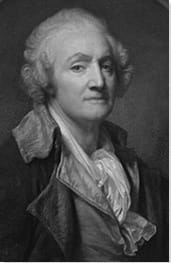Summary of Jean-Baptiste Greuze
Greuze won commercial and critical success following his showing of a series of small scale domestic interior scenes - or genre paintings as they were sometimes known - at the Paris Salon in the mid-eighteenth century. Chief amongst his advocates was the influential philosopher and art critic, Denis Diderot, who extoled Greuze's vignettes as a new type of "morality in paint". Indeed, Greuze was credited by many with creating a whole new genre in French painting. Following a less successful foray into academic painting, Greuze turned his attentions to a series of "innocent" portraits of adolescent girls and young women - "Greuze girls" as they were popularly referred to - executed in the pastel shades of the Rococo style, and which often carried thinly concealed sexual allusions. Paintings of this ilk soon flooded the market, however, and this, coupled with the rise of Neoclassicism, saw Greuze drift into relative anonymity (and poverty) with the last years of his life.
Accomplishments
- More than just a highly accomplished painter, Greuze was a natural storyteller, and a virtuoso of the modern parable. Following his early Salon success, he attracted a strong following amongst the public who connected with his ruminations on the moral complexities of everyday modern life. These works had their precedents in seventeenth Dutch and Flemish painting, and which echoed the themes and attention to detail of the "modern moral subjects" of the eighteenth century English painter, William Hogarth. They were often, like his early masterpiece, Broken Eggs (1756), familial dramas played out in sparsely furnished domestic interiors.
- Greuze developed as a fine painter of portraits. His preferred subject was "innocent" young women typically rendered in Rococo style of pale white skin and bedecked in the current pastel-colored fashions. These works were much imitated in Greuze's own lifetime, and, like his genre pieces, Greuze's portraits, while capturing some of the individuality of his sitter's character, could also carry moral allegories, often alluding the loss of sexual innocence.
- Greuze's great ambition was to be accepted as a history painter, but his failed attempt to be recognized by the Academy in this field put an end to his ambition to be received as a "serious" artist. Nevertheless, his paintings in this idiom, inspired by his hero, the "founding father" of French history painting - Nicolas Poussin, were not without merit and showed a strong feel for classical compositional principles. Indeed, Greuze's painting would play a supporting role the rise in popularity of Neoclassicism in the late part of the eighteenth century.
- Greuze was an exceptional exponent of the so-called "expressive head" genre. A derivative of portraiture, these works typically presented images of young girls and women (from the neck up) executed in non-naturalist Mannerist tones. These paintings became signature pieces with the "Greuze girl" (as she became commonly known) representing the late eighteenth-century cult of sensibility and the growing interest in emotional and intellectual development in children and adolescents.
The Life of Jean-Baptiste Greuze
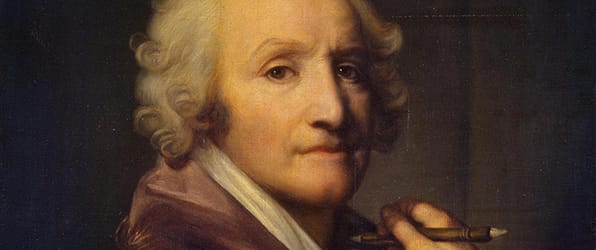
Addressing the French public, the famous critic and philosopher, Denis Diderot, said of Greuze: "...your painter and mine [and] the first to decide to endow art with morality and to serialize events in such a way that one could write a novel about them."
Important Art by Jean-Baptiste Greuze
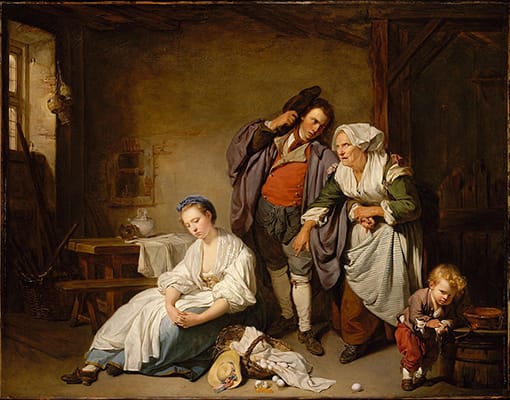
Broken Eggs
Richly detailed, Greuze's painting is centered on a young woman, her hands clasped, seated in a sparsely furnished room. Beside her is a basket and several broken eggs scattered across the floor. Standing behind her are a man and an older woman engaged in busy conversation, while on the lower right of the canvas a young boy (perhaps the young woman's brother) with his arm resting on an overturned barrel on which sits his toy bow and arrow. The boy tries in vain to mend one of the broken eggs.
Greuze's popularity as an artist was founded on his ability to create works which carried strong statements about modern morality. Rich in symbolism, the message would still have been clear to most viewers: the young girl has forgone her honor with the broken eggs symbolizing a loss of virginity. However, the historian Katharine Baetjer detects a note of ambiguity in the scene. She writes, "the behaviour of the blond boy in the lower right corner elucidates the event. His elliptical expression (for what can so young a child know?) encourages the viewer to think darkly about the connection between the pretty girl, the remonstrating crone, and the dominant young male. With a napkin, the boy clutches the shell of a broken egg, the contents of which trickle in a liquid stream to the ground. The malefactions of the man with respect to the woman are thus suggested, because presumably she has lost her virginity, although it is not clear that she is unhappy about it".
Oil on canvas - Metropolitan Museum of Art, New York, New York
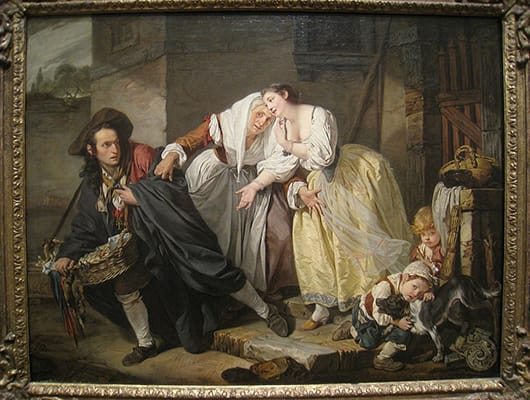
The Neapolitan Gesture
In this vignette, Greuze has created a scene in which an old woman has interrupted an attempted liaison between two would-be lovers. Pulling at the young man's cloak, she reveals that he is not the traveling peddler he claims to be. As he struggles to break away from the woman's grip, his female companion looks on longingly at him. Influenced by his student days in Italy, this painting was one of four the artist created depicting scenes of Italian life. According to author James Thompson, "Greuze's experience of the flamboyant gestures that [...] were an essential component of Italian speech helped push the French artist toward the extravagant hand movements that characterize the mute melodramas for which he became so famous".
When this painting debuted at the Paris Salon in 1757, viewers responded favourably to the moral message that put a woman's virtue above the mighty pull of carnal desire. But, as Thompson notes, on closer scrutiny, Greuze's message becomes a little more ambiguous. He notes that the young girl is in fact, "mocking his unmasking [as a peddler] with the movement of her left hand that gives the picture its title, the young woman at the same time gazes longingly after him, and extends her right hand as if to encourage another sneak attack. The old servant makes explicit with her outstretched left palm just what she is guarding, but her right hand, in expelling the young man, also paradoxically appears to restrain and unite him with the young woman. [Meanwhile the] outward gaze [of the young boy in the right foreground], appealing to the spectator, is echoed with deeper comprehension by the older brother behind". Thompson concludes from this that the painting carries a "compositional ambivalence" and that the surface "message of simple morality is undercut, complicated, even contradicted by the painter's approach".
Oil on canvas - Worcester Art Museum, Worcester, Massachusetts
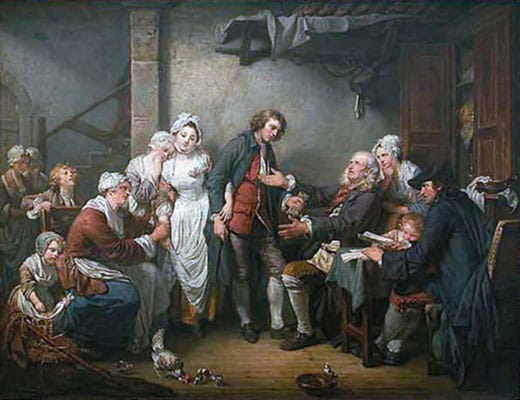
L'Accordée de Village
L'Accordée de Village, often referred to as The Marriage Contract or The Village Bride, is a familial scene in which a man is shown executing a marriage contract between his daughter and her suitor. The father is an elderly gentleman seated on the right side of the canvas. He gestures to his soon-to-be son-in-law while his other hand holds a leather purse stuffed with money that will be his daughter's dowry. The man sitting to his left holds the paper on which the contract will be notarized. The bride-to-be stands next to her future husband with her left arm intertwined with his, while her mother holds her other hand and that of her younger sister who clings to her mother. Not all the people in the room are interested in the transaction as many of the younger children look bored. One has fallen asleep and another older sister is positioned behind her father looking on jealously at what she believes will be her sister's future happiness.
Debuting at the Paris Salon of 1761, the painting was rapturously received by both public and critics who recognized in it the narrative that piety and purity in young women would be rewarded with a happy married life. The fact that it further bolstered Greuze's reputation was due in large part to his friend, the critic and philosopher, Denis Diderot. According to art historian Anita Brookner, "Diderot, after an enthusiastic description [...] sets his seal of approval [by stating]: 'His composition is full of wit and delicacy. His choice of subject is a proof of sensibilité and good conduct'". Other art critics of the day were also quick to acknowledge the arrival of a new master. One was the priest, playwright and literary critic, Abbe Joseph de la Porte, who, in Brookner's words, "was moved by the utter decency of the whole thing: '... the picture so long awaited in the Salon has as its subject an honest rural family'", he wrote, and Greuze "was acclaimed as having created a new genre".
Oil on canvas - Musée du Louvre, Paris, France
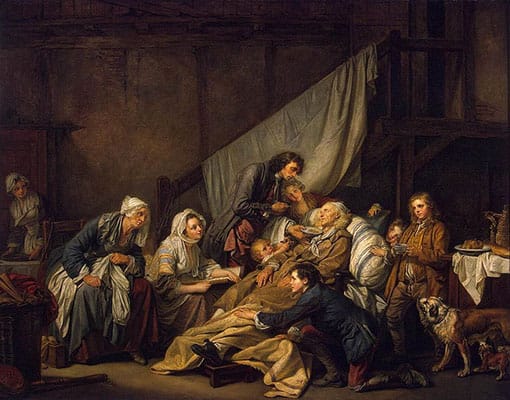
Filial Piety
Also referred to as The Paralytic and his family and The Benefits of a Good Education, Greuze paints several people gathered around the bed of a sickly and paralyzed elderly man. The ragged style of their clothes, and the condition of the dark and unadorned room in which they sit, imply that they are lower class citizens. The Hermitage Museum states, "the artist constructed his painting like an Antique bas-relief, dividing it into clear, precise planes, in order to emphasize the significance of the story and the moral it contains. At the same time, he revealed a great gift for realistic depiction in his ability to capture expressive poses and gestures, for which he made many preliminary drawings and studies".
It was this piece that sealed Diderot's approval of Greuze and he became the artist's strongest champion. This connection helped to increase the artist's popularity, and the subsequent demand for his work, especially amongst Russian nobility with whom Diderot was closely connected. According to the Hermitage Museum, "the work brought renown to the author and was purchased by Catherine II through the mediation of [Diderot] who described the genre as 'morality in paint' and it was he who first called this painting The Benefits of a Good Education, in keeping with the new aesthetic principles by which art should play an educational or enlightening role".
Diderot wrote (cited by Brookner), "Greuze is really the man for me [...] To begin with, the genre pleases me, it is a moral painting. Well! Hasn't the brush been consecrated to debauchery and vice for long enough - for too long? Should we not be pleased to see it compete with the drama in an effort to touch us, to instruct us, to correct us and to invite us to virtue? Courage, my friend Greuze, paint moral pictures and go on painting them".
Oil on canvas - Hermitage Museum, Saint Petersburg, Russia
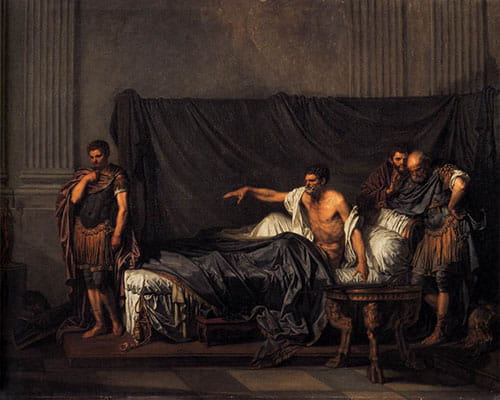
Septimius Severus and Caracalla
In a "radical" departure for Greuze, the artist created a history painting. Set in the time of Ancient Rome, Emperor Septimius Severus lays on his bed pointing at his son Caracalla who he is accusing of trying to have him killed. This was perhaps Greuze's most controversial painting - his submission for full admission into the French Academy; an action that, some 14 years late and painted by a genre artist, was seen by some establishment figures as nothing short of scandalous. Describing this incident, Thompson writes, "'The Greuze Affair,' as it has been dubbed [came about when] the Academy rejected Greuze's historical [painting] as unworthy of the artist". Nevertheless, Greuze was accepted into the Academy "on the basis of his previous celebrated works". Thompson adds that "Greuze, in a predictably hurt and angry response, suspended his Salon participation for over thirty years, showing and selling pictures with considerable initial success from his own studio".
Despite the poor reception of this piece, and the fact that it cost him the support and friendship of Diderot, the painting, which was inspired by the work of the great French history painter Nicolas Poussin, was not without merit and in fact played its own supporting role in the rise of Neoclassicism. As Thompson explains, "Greuze's composition was as effective a recapitulation of Poussiniste style [...] as had yet been seen in the eighteenth century, and remained one of the most impressive until Jacques-Louis David's sensational debut twelve years later [...] Even apart from Septimius Severus, Greuze served as a crucial figure in the transmission of Poussin's organizational structure to the generation of David through the compositional principles, of his genre scenes, which often follow those of the founding father of French history painting [Poussin]".
Oil on canvas - Musèe du Louvre, Paris, France
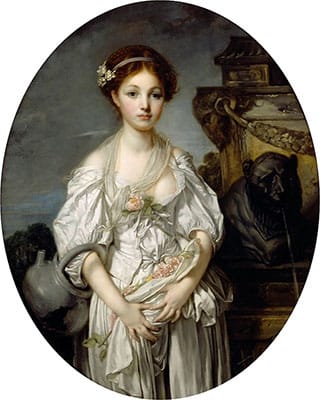
The Broken Pitcher (La cruche cassée)
By the early 1770s Greuze was established as a painter of portraits. His preferred subject was young women with pale white skin, and a slightly dishevelled appearance. The Broken Pitcher was one of Greuze's most popular portraits and was frequently copied during his lifetime.
It features a young girl standing in an outdoor setting. She is wearing a white dress and stares out at the viewer. She is holding a broken jug which she has carefully wrapped in a white cloth.
Like his earlier genre scenes, this portrait seems to carry a moral message with the broken pitcher symbolizing the subject's loss of virginity. "It was all too obvious to the spectator that this was another allegory of lost innocence", writes Brookner, "but it appeared [...] a remarkably decent work. It is certainly, for a subject of this type, a very painterly one. The luscious tender flesh [...] is now on the verge of decadence; the plump hands are becoming mannered. The dress, roughly painted with stiff loaded brush-strokes, sets off the melting Greuzian softness of the head, and the colours of the accessories (pink roses, green leaves, dark grey-blue sky) overflatter the tender passages".
Baetjer, meanwhile, makes a salient comment about Greuze's portraits in general. She writes, "In portraiture, which Greuze would have been obliged to pursue for financial reasons, his achievements are underestimated. Not only was he skilled at the polish and detail that important clients such as the comte d'Angiviller [director of the Bâtiments du Roi, a forerunner of a minister of fine arts] required, he was aware of the demands of fashion, and he was cognizant of character and could be a convincing naturalist, drawing attention to the spark of an individual personality".
Oil on canvas - Musée du Louvre, Paris, France
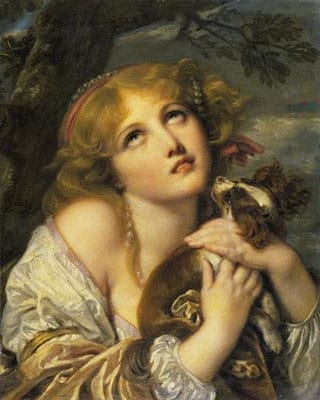
The Souvenir
Also known as Fidelity, this so-called "expressive head" portrait features a young woman holding a dog and looking up towards the sky with a wistful expression. The subject is stood in front of a large tree and we can tell that it is windy from the way the leaves of the tree seem to be moving, and the observation that her hair and the dog's ear seems to be caught in the wind. The Souvenir is a fine example of what Brookner describes as "the typical Greuze girl", she has "the typical Greuze mouth and oval eyes [that are] awash with humidity", and, like all the other "Greuze girls", she has "a wealth of heavy and complicated hair, immensely thick neck and shoulders, and tiny fat hands". Brookner adds that "In the true mannerist tradition", he paints with "completely unreal colours [including] shiny cosmetic tones of mauve, pink and yellow".
According to The Wallace Collection's website, "like many painters, Greuze had produced studies of individual heads as drawings and in oil from early in his career. Some of them were nature studies, others specifically prepared figures in his larger narrative paintings. From the late 1770s, these 'expressive heads' developed into a separate genre, often erotically charged, and into a main field of his activities [...] A pet dog was often used to imply fidelity in eighteenth-century painting, although Greuze invests the relationship of mistress and pet with a morbid intensity in keeping with the late eighteenth-century cult of sensibility". Indeed, Greuze's "expressive heads" were indicative of a growing fascination within French society with the emotional and intellectual development of children and adolescents.
Oil on canvas - The Wallace Collection, London, England
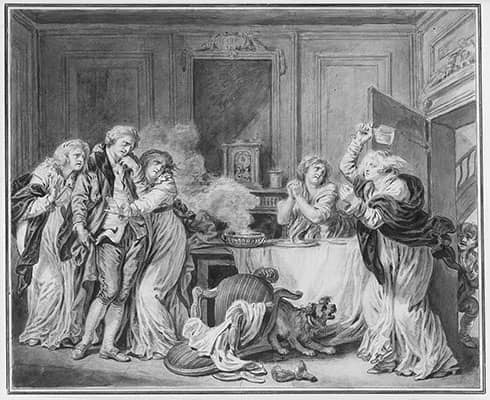
The Angry Wife
In this work on paper, Greuze has depicted an angry woman charging into a room to confront her family. As described by the Metropolitan Museum of Art, "here, wild-eyed and wielding a decanter above her head [...] this woman bursts into the room to accost her husband, who cowers between his daughters at left. The barking dog, broken bottle, overturned chair, and steaming dish all signal the disarray of the household. The contrasting manners of husband and wife also invert the 'natural' gender roles assigned by Enlightenment thinkers".
While many of Greuze's paintings are narrative parables that suggest appropriate ways to live one's life, this work is more personal and can be interpreted as alluding to the artist's difficult relationship with his own wife. According to author James Thompson, "The Angry Wife [...] is probably the most autobiographical of his domestic dramas; Edgar Munhall has even suggested that it is an accurate recording of the Greuze family interior, connecting the clock, chair, and mirror with a 1793 inventory of the artist's possessions [...] Her phallic glass weapon unconsciously echoes Mme Greuze's most potent punishment against her husband: her recurrent predatory infidelities, often with his young male students. In his divorce petition, Greuze gives an account of an unprovoked attack that bears certain similarities to the woman's crazed assault in the drawing[which included this statement]: 'We were still sleeping in the same bedroom, when I awoke one night with a start and, by the glow of the night-light, caught sight of Madame Greuze, about to batter my head with a chamber pot...'".
Brush black and gray wash, heightened with white over traces of graphite - Metropolitan Museum of Art, New York, New York
Biography of Jean-Baptiste Greuze
Childhood and Education
Little is known about the early life of Jean-Baptiste Greuze. Born Jean Greuze, he came from humble beginnings and was the sixth of nine children. His father, Jean-Louis Greuze, supported his family by working as a roof tiler. The fact that Greuze might have been ashamed of his rural Burgundy background is suggested by his later actions. As author James Thompson writes, "Greuze's relations with his provincial roots were complex [...] he was upwardly mobile, lengthening his name to 'Jean-Baptiste' for a more refined ring and improving the profession of his father and grandfather from 'roof tiler' to 'architect' on his marriage certificate".
Greuze's interest in art developed at an early age and, according to art historian Anita Brookner, "from the age of eight years old he showed a passion for drawing which he had to conceal from his father". However, his father reversed his judgement when his son "presented him with a pen drawing of Saint Jacques which was so accomplished that the elder Greuze took it for an engraving, and on being enlightened, consented to his son's wish to become an artist and sent him to the studio of Charles Grandon in Lyon [in 1747]".
Early Training
Intent on pursuing a career as an artist, Greuze spent three years in Lyon studying under Grandon, before moving to Paris in 1750 where he received further training from the Rococo painter, Charles Joseph Natoire. He applied for preliminary membership in the Académie Royale de Peinture et de Sculpture which was granted, on June 28, 1755.
Although he formed a bond with fellow student Jean-Baptiste Pigalle, Greuze was not popular with his classmates. Fully focused on his studies, it was at the Académie that, in Brookner's words, "[he] made the acquaintance of the engravers Moitte and Le Bas, both of whom were instrumental in popularizing Dutch genre painters of the seventeenth century". His unwillingness (or inability) to successfully socialize did not distract from his nascent talents which were recognized when he debuted with a head study, a portrait, and three genre scenes, at the 1755 Salon.
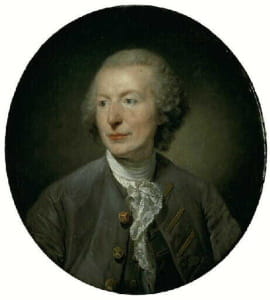
Greuze took up an invitation to visit Italy accompanied by the art critic and biographer, Abbé Louise Gougenot, whose connections helped Greuze make important contacts. He stayed in Rome for a year where he worked (free of charge) at a studio owned by the Académie. Brookner writes, "Greuze appears to have made no friends in Rome, although he was there at the same time as Fragonard and Hubert Robert [...] Greuze did not go in for the sort of camaraderie normally practiced among artists. Ferociously independent, rancorous, proud, and quick to take offence, he seems to have moved suspiciously through a milieu so very different from the one in which he grew up. He retained from his early background a mighty ambition for his works and a desire to make people pay for them, in every sense of the word".
He may he been considered unsociable, but Greuze did benefit from several commissions and made decent money painting portraits of people (and future patrons) he met during his travels. It was also in Italy that he had his first experience with the opposite sex and, as Thompson explains, it was in Italy that Greuze engaged in a "star-crossed unconsummated love affair with an Italian countess, from whom the painter, with self-styled nobility, walked away, but whose memory he guarded as an ideal contrast to the sad, sordid realities of his own later marriage".
Mature Period
Greuze made his breakthrough on his return to France when he exhibited two of his most famous "domestic morality" paintings, Broken Eggs (1756) and The Neapolitan Gesture (1757), at the 1757 Salon. Historian Katharine Baetjer writes, "The artist's tales and the way he relates them were derived in part from earlier Dutch genre scenes, which were admired and collected in Paris at the time. They may also have reflected aspects of his life, though the subject here is universal. In the 1750s, the audience for Salon exhibitions was increasingly numerous, diverse, and admiring of narratives of this kind". Brookner adds that critics also started to take notice with one remarking "'The heads of M. Greuze are attractive in colour and are pleasing to everyone; in this limited genre he holds his own against several great men because he knows and cherishes nature: in his desire to avoid dark tones, however, he has gone to the opposite extreme; I myself should give him the palm for portraiture'". His use of pastel colors, and a strong preference for light brushstrokes, reflected the influence of former tutor, Natoire, and it would see Greuze linked with the wistful Rococo style.
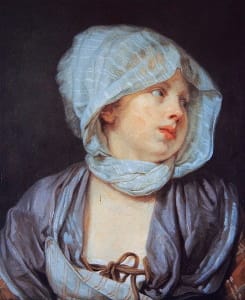
In 1759, Greuze made the acquaintance of two individuals who would have a great impact on his career and his happiness (or lack of in the case of the latter). The first, was his future wife, Anne-Gabrielle Babuti, whom he met at her father's book shop. The fact that she was manipulative and destructive does not seem to be in debate. As Brookner explains, "she was twenty-seven when she met Greuze and looking for a husband. According to Greuze, she manoeuvred the marriage by the simple expedient of announcing the engagement and then begging Greuze not to ruin her pride by denying it".
Despite having three daughters together, who Greuze doted on (he trained the second, Anna-Geneviève as an artist), theirs would be a difficult marriage and the perfect family life Greuze craved would not to be realized. Brookner states, "[Babuti] was greedy and dissolute; she neglected her children and seduced Greuze's sitters; she corrupted his pupils (which explains why the ones that survived were usually women); she extorted payment for commissions and is largely responsible for the atmosphere of bad faith which surrounds his dealings with engravers". Still, Greuze did take her as a subject for several paintings. According to Thompson, Babuti's "good looks were widely noted. [The art critic Denis] Diderot's eloquent early reference to her distinctive features - 'doll-like, white and perfect like the lily, [touched in] pink like the rose' - is a fair description of the 'Greuze girl' type, and the painter's contemporary critics commonly remarked the recurrence of her features in his work, not just as a portrait subject but also as an allegorical and dramatic protagonist".
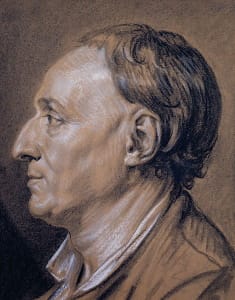
Greuze's domestic morality scenes garnered broad popular appeal and, with a wife and small children to support, he became more acquiescent to public demand and produced numerous works in this genre. Although they lacked the satirical edge of the Englishman's "conversation narratives", Greuze's work introduced to France something of the "modern moral subject" that had help make William Hogarth's reputation in Britain and overseas. Like Hogarth's popular prints, Greuze's paintings focused on the everyday travails of ordinary people and confirmed the artist's knack for capturing fine domestic detail.
In 1759 Greuze made the acquaintance of art critic and philosopher Denis Diderot (writer of French Enlightment's masterpiece encyclopédie written between 1751 and 1772). Impressed with his domestic genre scenes, such as The Village Marriage (1761), and moral paintings including Filial Piety (1763), Diderot became an important ally and forceful advocate for his works. Speaking of this influence, Thompson states, "Diderot's unmitigated advocacy of Greuze began with The Village Marriage, but had to wait until the 1763 Salon for fully meditated expression. Commencing with an emphatic endorsement - 'Here is my man: Greuze' - the critic passed almost immediately to Greuze's Filial Piety, painted that year, and stated: 'Above all the genre pleases me: it is moral painting.' With this 1763 critique [...] Diderot became for Greuze 'at once his sycophant and his master'". As deeply committed to the principles of Enlightenment as Diderot was, Greuze's depictions of simple family life came as a welcome change from the leisure and romantic follies of the French upper class which were at the heart of the popular Rococo narrative (and of which Diderot was fiercely critical).
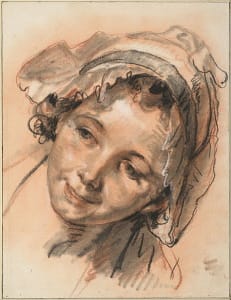
Diderot's support for Greuze ended over a controversy that would become known as "The Greuze Affair". It centered around the artist's submission to gain full membership of the Academy. Despite his widespread popularity, Greuze held ambitions to become a great history painter in the fashion of his idol, Nicolas Poussin. However, as Baetjer writes, while Greuze "exhibited to critical acclaim at the Salons of 1757, 1759, 1761, 1763 and 1765 [his] further submissions were barred when he failed to offer the compulsory reception piece to the Académie Royale". When he did finally present his painting, Septimius Severus Reproaching His Son Caracalla, in 1769 (fourteen years after it was due) it was rejected. Baetjer writes, "while the artist was mindful of classicizing norms, his passionate treatment of an obscure theme won him no praise, and he was received [into the Académie Royale] but in the lowest category, genre painter". Greuze was hurt and humiliated by the rejection and refused to participate in the Academy's salons for over thirty years. Dismissive of Septimius Severus, but more so his arrogant petulance, Diderot spoke out publicly against his former friend, writing "[Greuze] is an excellent artist, but a totally impossible person. One should collect his drawings and [genre] paintings and leave the man alone".
Greuze's failed Academy submission marked the beginning of the downturn in the artist's reputation. But one of his other history paintings of this period, although unfinished, is worthy of mention, with Baetjer even suggesting that had the canvas, which features a reclining female nude, been finished, "it might have achieved greater success [among the Academy] than the rather anodyne Septimius Severus".
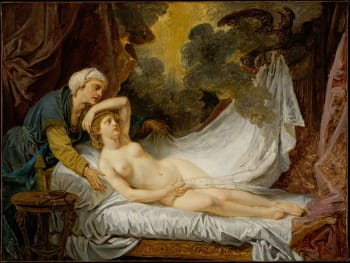
The painting is thought (Greuze never titled the painting) to represent the Roman myth of Aegina, the daughter of the river god Aeopus, who was visited by the god of sky, Jupiter, and carried off by him in the form of an eagle. Baetjer writes, "Greuze had learned early, in accordance with established practice, to draw (with tremendous skill) from the nude male model, because well-formed figures in motion were a required component of history painting. It has been argued that he created Aegina while searching for a subject for his submission to the Académie and then abandoned it for reasons we do not know. There is uncertainty about the subject, too, because the canvas was not exhibited during the artist's lifetime and therefore he did not title it [...] There is, however, no doubt that the painting was important to him, as the nude was prepared in closely observed studies for the pose drawn from the female model".
Later Period
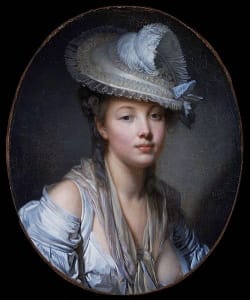
As if professional criticism of his history painting was not damaging enough, others were starting to express their distaste for Greuze's portraits of young women. With their white fleshy skin and provocative and revealing clothing, the "Greuze woman" carried erotic undertones. But it was also the sensual expressions on the women's faces that saw him linked with the idea of the "cult of sensibility" as espoused by (amongst others) the Enlightenment philosopher, Jean-Jacques Rousseau.
In addition to his professional challenges, difficulties in Greuze's personal life had reached a new nadir. Having tolerated his wife's infidelities for years, she now began to engage in affairs with his male students which directly impacted on Greuze's authority as a teacher. The situation became so damaging that Greuze was forced to limit his students primarily to females. Greuze's wife became so unstable, in fact, that, fearing for his physical safety, Greuze filed for, and was granted, a divorce by the courts.
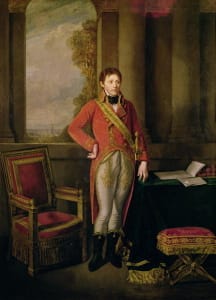
The late years of Greuze's career were difficult for the artist. Without serious recognition as a history painter, the income from his genre paintings began to dwindle as other artists became proficient in mirroring his style and the market became flooded. As Brookner explains, "Greuze had the unfortunate distinction of being plagiarized both in his lifetime and after his death, by his contemporaries and by his pupils. Although serious competition did not make itself felt until the mid 1770s, there were indications that his genre was not to be exclusive as early as 1767 when his pupil [Pierre-Alexandre] Wille the younger [created a painting that was] a close copy of the figures of the mother and daughter in Greuze's L'Accordée de Village [and] despite their inequalities they gave parallel competition to the Greuze monopoly and together contributed to the first stage of his decline".
Nor did the rise of Neoclassicism, and the rising star of artists such as Jacques-Louis David, help Greuze's standing. Greuze was a great admirer of David and, like the younger artist, he had an interest in the Revolution, and, like him, painted portraits of Napoleon and other political figures. But things had become so difficult for Greuze that at the time of painting Napoleon Bonaparte's portrait in 1803, he was in dire financial straits. As Thompson explains, "Greuze was living in poverty. Requesting an advance on a government commission [...] the painter wrote plaintively: 'I have lost everything, except talent and courage.' Napoleon himself apparently did not know of Greuze's indigence". Legend has it, in fact, that on learning of Greuze's death, Napoleon exclaimed, "'Dead? Poor and neglected! Why did he not speak? I would gladly have given him a Sèvres jug filled with gold for every copy made of his Broken Jug [painting]'".
Despite his destitution, Greuze continued to paint while clinging to the lingering hope of being in favor once more; proof of which can be seen in his exhibiting of five new works in the 1801 Salon. It was not enough however to improve either his financial situation or his reputation and, broke and all-but forgotten, he became ill and died at work in his Paris studio in 1805, aged seventy-nine.
The Legacy of Jean-Baptiste Greuze
Jean-Baptiste Greuze's work, while embodying aspects of the Rococo style, also drew heavily on the Dutch and Flemish masters of centuries prior. But his painting style was still very much his own creation. His domestic genre and moral paintings brought something new to eighteenth century French art and were indeed widely regarded as a genre in their own right. His portraiture, which often focused on subtly sensual depictions of young women with softly rendered pale white skin, slightly revealing clothing, and emotionally contemplative expressions, earned them the title "the Greuze girl". It was a new, if somewhat controversial, approach to portraiture that was carried forward in the work of his students and associates of the next generation, the majority of whom were women, including Geneviève Brossard de Beaulieu, Constance Mayer, and Élisabeth Louise Vigée Le Brun.
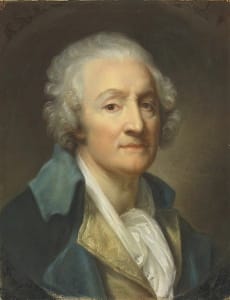
According to art historian Everett Fahy, "Greuze has been called by [the French art historian] Pierre Rosenberg 'one of the most misunderstood [...] artists in the whole history of painting.' Yet Greuze is the artist whose work most successfully bridged the two extremes of eighteenth-century French painting; his extraordinary popularity in his own time provides the best transition from Watteau's small admiring circle of amateurs to David's fervent Revolutionary masses". Fahy adds that David's classical compositions may seem "far removed from Greuze's in historical setting, but both their pictorial construction and a portion of their animating idealism had been anticipated in the works of the older artist [Greuze]". The last word goes to Brookner who states that many of Greuze's paintings involved, "pictures built not only around a story but also an idea. They represent didactic moral painting before the advent of David, who learned so much from Greuze".
Influences and Connections

- Denis Diderot
- Abbé Louise Gougenot
- Pierre Rosenberg
- Jean-Jacques Rousseau
- Pierre-Marie Gault de Saint-Germain
-
![Mannerism]() Mannerism
Mannerism -
![The Rococo]() The Rococo
The Rococo -
![Neoclassicism]() Neoclassicism
Neoclassicism - Dutch genre painting
- French genre painting
-
![Jacques-Louis David]() Jacques-Louis David
Jacques-Louis David - Geneviève Brossard de Beaulieu
- Jeanne-Philiberte Ledoux
- Constance Mayer
- Marie Vigée-Lebrun
- Denis Diderot
- Abbé Louise Gougenot
- Pierre Rosenberg
- Jean-Jacques Rousseau
- Pierre-Marie Gault de Saint-Germain
-
![The Rococo]() The Rococo
The Rococo -
![Neoclassicism]() Neoclassicism
Neoclassicism - French genre painting
